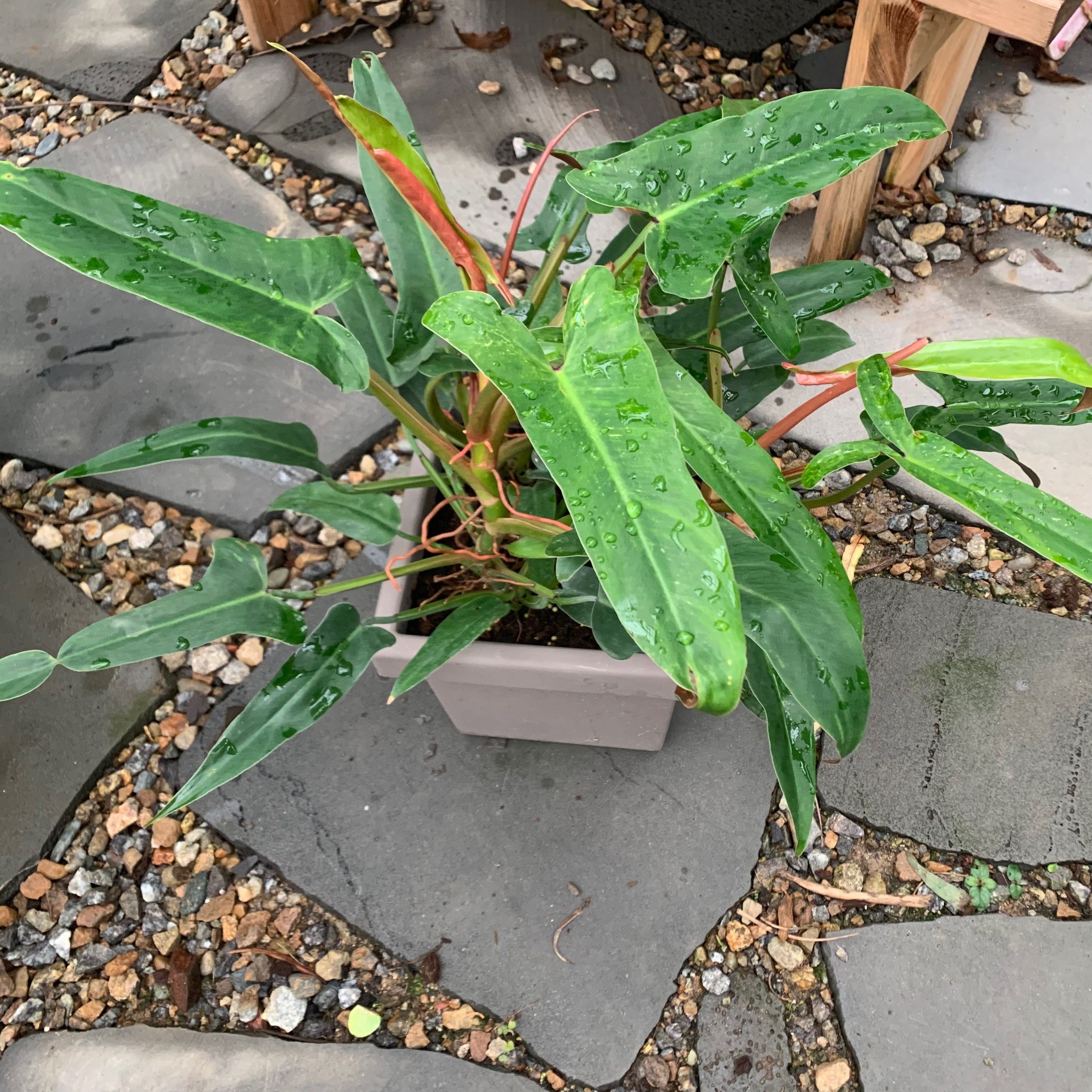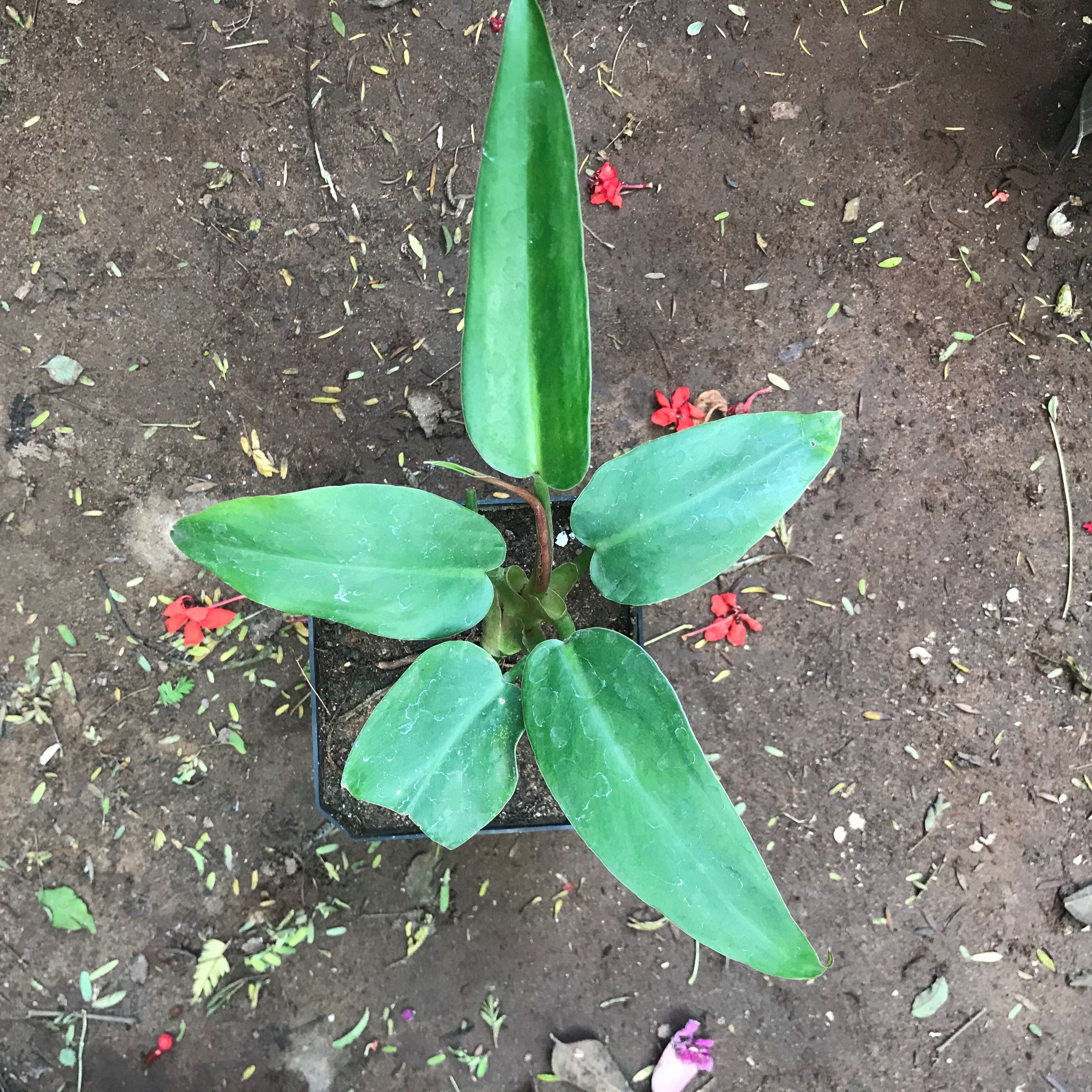Philodendron Megalophyllum
Origin
Peru
Family
Aracea
Description
Philodendron deflexum previously known as Philodendron megalophyllum, grows to humongous sizes. It is a scandent epiphyte. Blades are thinly coriaceous, elongate-cordate sagittate. Posterior lobes broadly oblique, obtusely oblong, separated by a broad, deeply parabolic sinus. Anterior lobe almost 4 times longer than the posterior lobe, gradually narrowed, arcuate, slightly extrose ('linea') towards the apex..
Environment
Philodendrons grow best in medium light and bright indirect sunlight. Older leaves turn yellow naturally. However, several leaves turns yellow at once, it could be an indicator that the plant is getting too much sun. They will tolerate low light, but if the stems become leggy with several inches between the leaves, move the plant to a brighter location.
Philodendrons like rich, loose potting soil that will drain well but is still high in organic matter. They can grow in 100 percent sphagnum peat moss. Avoid alkaline soil at all cost.
Keep the growing medium moist at all times. Push aerial roots into the soil on climbing varieties. Keeping the plants moist during winter when indoor air can get very dry can be a challenge. At the same time, avoid over watering or root rot may develop. If the leaves are drooping, it can indicate either too much water or not enough..
Philodendron is well suited to humid & tropical climate. They like humidity, so you might maintain the humidity around them with a pebble tray of water. Mist them frequently during the growing season, about every two days. During the \winter you should mist them every three to four days.
Philodendrons will produce larger leaves and remain healthier if you fertilize them regularly. Use slow-release pellets at the beginning of the growing season, or weekly 20-20-20 liquid fertilizer. During the winter you only need to fertilize about once per month.
Landscape
Perfect for lightening a dark dull area of the garden, or showing off in a favorite pot.
Eliminates
Formaldehyde, benzene, trichloroethylene, xylene, ammonia, and more
Caution
Parts of plant are poisonous if ingested. Philodendrons are especially poisonous to dogs and cats.



















